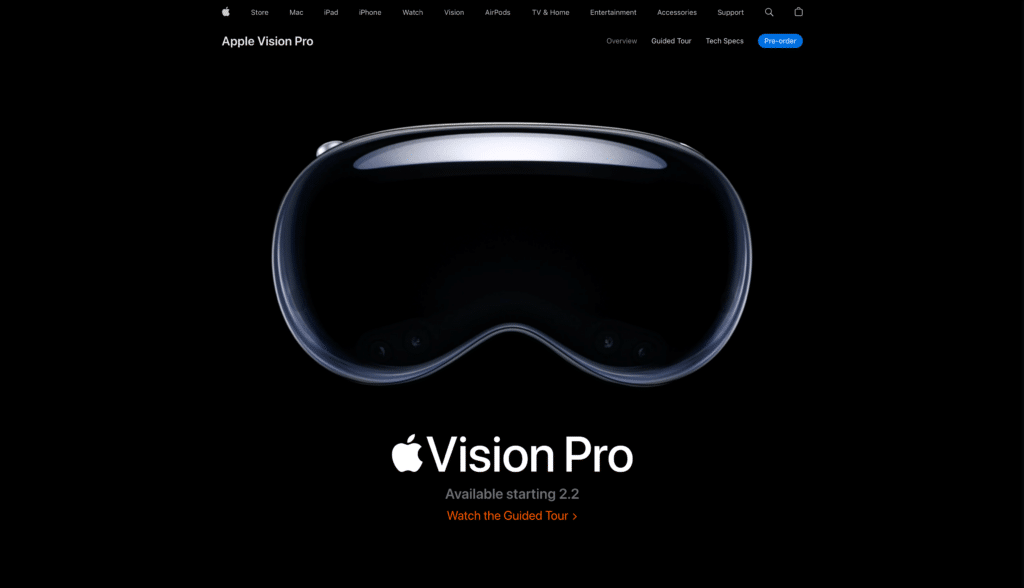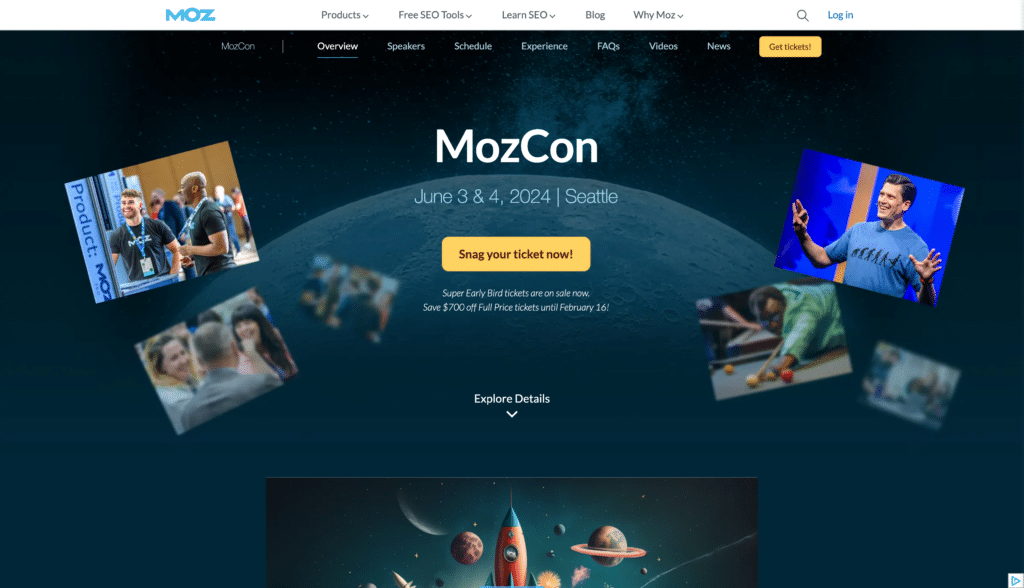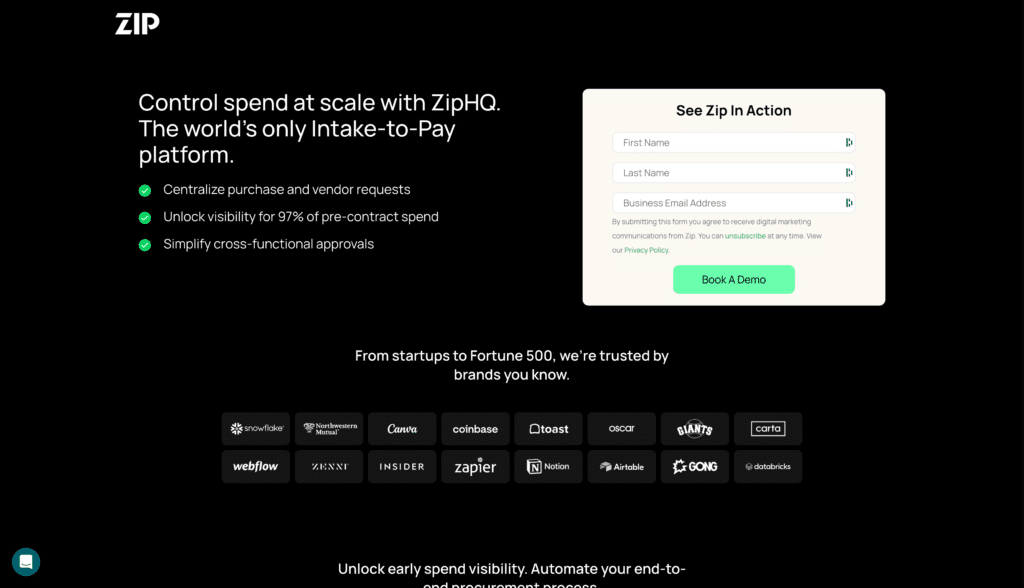A landing page is a standalone web page designed specifically to receive and convert traffic from various marketing campaigns. Potential customers can “land” on this page when they click through an email, ad, or other digital location.
Unlike web pages, which encourage exploration and have many goals, landing pages are designed to move visitors towards only one action. Landing pages are optimized for conversions on this one goal.
Lead generation landing pages are designed to collect user data, like name and email address, in exchange for something valuable. This could be a free trial, an eBook, or a webinar registration. The key here is offering enough value to persuade visitors to part with their personal information.

Click-through landing pages, often used in eCommerce and B2B marketing, aim to warm up potential customers to a particular product or offer. They provide detailed information with a clear CTA, guiding visitors towards making a purchase or entering into a business relationship.

Improved Conversion Rates: By providing a relevant and focused experience, landing pages increase the likelihood of converting visitors into leads or customers.
Enhanced Tracking and Analytics: Landing pages allow for precise tracking of user behavior and campaign performance, enabling marketers to gather valuable insights and make data-driven decisions.
Better Lead Capture: Dedicated landing pages are highly effective at capturing leads, as they can be tailored to specific audience segments and offers, making the value proposition clearer and more enticing.
Increased Relevance for Ad Campaigns: By aligning the content of landing pages with specific ads, businesses ensure a cohesive and relevant user experience, thereby improving the effectiveness of their ad spend. Some ad platforms analyze and rank landing pages based on relevance to campaign targeting. This rank has a large impact on the likelihood ads will show in premium positions.
Segmentation and Targeting: Landing pages can be customized to target different segments of your audience, allowing for more personalized marketing strategies.
Brand Awareness and Consistency: A well-designed landing page that aligns with your brand's style and message can significantly boost brand recognition and ensure consistency across all marketing efforts.
Direct Support to Business Goals: Whether it's increasing sales, generating leads, or promoting a new product, landing pages can be specifically designed to support various business objectives directly.
1. Crafting a Compelling Headline and Subheading
The headline is the first thing visitors see - it needs to grab attention and clearly communicate value. It should be concise yet powerful, explaining what the visitor will get from the page. The subheading should complement the headline by providing additional details or reinforcing the main message.
2. Creating Engaging Supporting Copy
The supporting copy should be persuasive and focused on the benefits of the offer. Use concise language and address the audience’s pain points. The goal of this copy is to establish a connection with the reader, demonstrate empathy, and convince them that what you're offering can solve their problem.
3. Designing Relevant and Captivating Media
Visuals play a crucial role in landing pages. Use high-quality images, videos, or graphics that are relevant to your offer and help illustrate your message. Visuals should enhance the content, not distract from it, and should align with your brand's aesthetic.
4. Including a Clear and Prominent Call-to-Action
Your call-to-action (CTA) should stand out and make it clear what action you want the visitor to take. Whether it's "Sign Up," "Buy Now," or "Learn More," your CTA should be concise and use action-oriented language. Your CTA should be the most noticeable element on the page. Use contrasting colors and large, bold text to ensure it stands out. The placement of the CTA is also important; it should be in a prominent position and appear multiple times on the page.
5. Incorporating Trust Indicators
Trust indicators such as customer testimonials, trust badges, and guarantees can significantly increase conversions. They help to build credibility and reassure visitors that their decision to engage with your brand is a safe and beneficial one.
6. Minimize Navigation Options
Simplifying the navigation on your landing page helps keep visitors focused on the main message and CTA. Limit the number of links and options available to reduce distractions and guide users towards the desired action.
7. Focus on the Consumer
Understand your audience and craft messages that resonate with their needs and desires. Address their pain points and highlight how your offer provides a solution. Tailor your landing pages to specific market segments for a more personalized experience. Customizing content to address the unique needs and interests of different audiences can significantly increase engagement and conversions.
8. Place Important Content Above the Fold
Ensure that key information, including your main headline and CTA, is visible without scrolling. This "above the fold" content is what visitors see first, so it should clearly convey the value of your offer.
9. Ensure Mobile-Friendliness
With the increasing use of mobile devices, your landing page must be mobile-friendly. Ensure it loads quickly and looks great on all screen sizes, with easy-to-use forms and buttons.
10. Perform A/B Testing
A/B testing involves comparing two versions of a landing page to see which performs better. Test different elements like headlines, CTAs, images, and layouts to understand what resonates most with your audience.
Once your landing page is optimized and ready, the next step is driving targeted traffic to it. Here are some effective strategies to increase the visibility and reach of your landing pages.
Share engaging content that links back to your landing page and use targeted social media ads to reach specific audience segments. The interactive nature of social media also allows for sharing and word-of-mouth promotion among your customers.
Use segmented email lists to send targeted messages that encourage recipients to visit your landing page. Personalize the emails to increase relevance and engagement.
Optimize your landing page for search engines to attract organic traffic. Use relevant long-tail keywords, create high-quality content, and ensure your page is technically optimized for search engines.
Paid advertising, such as Google Ads or social media ads, can be highly effective in driving traffic to landing pages. These platforms offer advanced targeting options, allowing you to reach specific demographics, interests, and behaviors.
Examining successful landing pages can provide valuable insights into what works and why. Here are some notable examples:
Product Launch Pages: These pages are designed to create excitement and anticipation for a new product. They often feature a countdown timer, engaging visuals, and a clear CTA to sign up for updates or pre-order.

Event Registration Pages: Used for webinars, conferences, or workshops, these pages focus on the value of the event, featuring speaker bios, an agenda, and testimonials to encourage sign-ups.

Free Trial/Demo/Book a Meeting Pages: For SaaS companies, free trial pages are critical. They typically highlight key features, benefits, and user testimonials to entice visitors to try the product.

E-Book Download Pages: These pages are often minimalistic, focusing on the content of the e-book and using a simple form to capture leads in exchange for the download.

Consultation Services Pages: Aimed at booking appointments or consultations, these pages usually feature a form, trust indicators like client logos or testimonials, and a detailed explanation of the consultation process.

Each of these examples demonstrates the effectiveness of a well-designed landing page in achieving specific business goals. They showcase the importance of clarity, relevance, and a strong CTA, regardless of the industry or purpose.
An effective landing page is focused, clear, and persuasive. It has a compelling headline, relevant content, high-quality visuals, a clear call-to-action (CTA), and is optimized for conversions.
While landing pages are typically not the primary tool for SEO, they can contribute to your site's overall SEO strategy through targeted keywords, quality content, and improved user engagement metrics.
Success can be measured through conversion rates, the number of leads generated, click-through rates, and other analytics that align with your specific goals.
Ideally, a landing page should have one primary CTA to maintain focus and clarity. However, secondary CTAs can be included if they are relevant and do not distract from the main goal.
The length depends on your goal and audience. Some pages need more content to persuade visitors, while others may require a more straightforward approach. The key is to include enough information to convince visitors to take action.
A homepage serves as the main entry point and offers a general overview of what a company offers. In contrast, a landing page is designed for a specific marketing campaign, focusing on a single call to action.
Regular updates are necessary to ensure relevance and effectiveness. This includes updating content, design, and CTAs based on user feedback and performance data.
Yes, ideally. Tailoring landing pages to specific campaigns ensures a more personalized and relevant experience for visitors, which can significantly improve conversion rates. For keyword-based targeting platforms (Google Search, Microsoft Search), landing pages must relate directly to keywords to rank highly and to compete properly.

